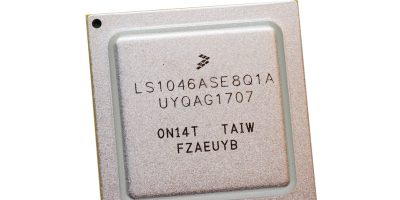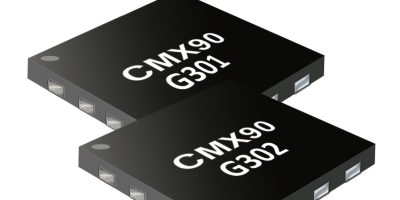Qualified flight models of Teledyne e2v’s LS1046-Space processor, based on Arm’s Cortex-A72. It targets compute-intensive space applications, including high throughput satellites and data compression, as well as artificial intelligence and imaging. According to the company, it outperforms existing alternatives by a factor of 30.
The LS1046-Space processor has minimal power consumption with a data processing performance that makes it suitable for deployment in power constrained Cubesat and Microsatellite platforms where an advanced data path design and access to multiple integrated peripherals are required.
“With its advanced processing capabilities, powerful feature set, and ease of use and implementation in space systems – it is an important enabler for artificial intelligence and machine learning. It especially suits future, low earth orbit (LEO) operations,” commented Thomas Guillemain, marketing and business development manager for digital products at Teledyne e2V.
Clocked at up to 1.8GHz, the 64bit LS1046-Space processor delivers 30k DMIPs and has a fast, 2.1Gtransfers per second, 64bit DDR4 SDRAM controller with embedded eight-bit error corrected code (ECC). There is also a 2Mbyte L2 cache shared across the four Arm cores. L1 and L2 caches also benefit from ECC-protection, providing a high degree of in-flight immunity to data corruption, said the company.
A range of embedded interfaces include 10Gbit Ethernet, three PCI-Express (PCIe) v.3.0 lanes, SPI, I2C and multiple UARTs. The device is supplied in a compact 23 x 23mm, 780-ball BGA package.
The LS1046-Space has a wide operating temperature range (-55 to 125 degrees C) and achieves 100krad total ionising dose tolerance. Immunity to single event latch-up (SEL) and upsets (SEU) is being validated in qualification. The processor is qualified up to NASA level 1.
Teledyne e2v’s supplies standard, semi-custom or full custom devices to customers in healthcare, life sciences, space, transportation, defence and security and industrial markets.
The company will be exhibiting at electronica in Munich (15 to 18 November) with a stand in Hall C4-215; and at Space Tech Expo Europe in Bremen (15 to 17 November) stand number M52 in Bremen, Germany.







